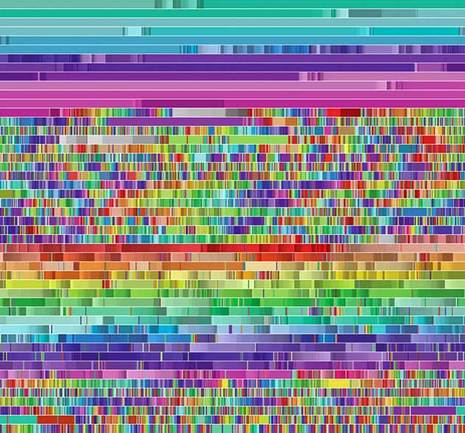What is Big Data? Big data are datasets that grow so large that they become awkward to work with using on-hand database management tools. Difficulties include capture, storage, search, sharing, analytics, and visualizing. This trend continues because of the benefits of working with larger and larger datasets allowing analysts to "spot business trends, prevent diseases, combat crime.
McKinsey addresses the benefits and risks of using big data.
"If US health care were to use big data creatively and effectively to drive efficiency and quality, the sector could create more than $300 billion in value every year. Two-thirds of that would be in the form of reducing US health care expenditure by about 8 percent."
I think the interesting thing here is that it enables the long tail to start to have an impact. Or, I should say a larger impact. You can sample from a large data set and understand what is going on, generally. But outliers and long tails can get ignored. This is a great place to focus when you think about the concepts of Quality Improvement, Six Sigma, and other improvement movements.
Being able to impact what is occurring on the fringe can have a great impact. Look at Itunes and Amazon for commercial examples of being able to deliver the Long Tail. Chris Anderson wrote a book a few years ago about the Long Tail. With Bern we operate in the Long Tail. When we analyze a radiology group to discover under-billings we are looking for exceptions. Most groups and I think healthcare providers are good with billing. We are looking for 98% accuracy. But, this still leaves an average of 2% error rate for us to discover. Since these are the long tail types of errors, it is a little more difficult to completely eliminate from happening. Not impossible, but a little more difficult.
So we search for trends in the data, to help explain and understand some of the causes. Perhaps there is a trend in the facility, modality, or scheduler. It may not be cost effective to eliminate some of the errors, provide a daily reconciliation of small dollar items. Some times we get close enough and that is good enough. And maybe that is ok. Because Bern could come in and provide a reconciliation (audit) of a batch of data (quarterly or annually) and be able to recover some of the money and do so in a much cost effective manner.
McKinsey addresses the benefits and risks of using big data.
"If US health care were to use big data creatively and effectively to drive efficiency and quality, the sector could create more than $300 billion in value every year. Two-thirds of that would be in the form of reducing US health care expenditure by about 8 percent."
I think the interesting thing here is that it enables the long tail to start to have an impact. Or, I should say a larger impact. You can sample from a large data set and understand what is going on, generally. But outliers and long tails can get ignored. This is a great place to focus when you think about the concepts of Quality Improvement, Six Sigma, and other improvement movements.
Being able to impact what is occurring on the fringe can have a great impact. Look at Itunes and Amazon for commercial examples of being able to deliver the Long Tail. Chris Anderson wrote a book a few years ago about the Long Tail. With Bern we operate in the Long Tail. When we analyze a radiology group to discover under-billings we are looking for exceptions. Most groups and I think healthcare providers are good with billing. We are looking for 98% accuracy. But, this still leaves an average of 2% error rate for us to discover. Since these are the long tail types of errors, it is a little more difficult to completely eliminate from happening. Not impossible, but a little more difficult.
So we search for trends in the data, to help explain and understand some of the causes. Perhaps there is a trend in the facility, modality, or scheduler. It may not be cost effective to eliminate some of the errors, provide a daily reconciliation of small dollar items. Some times we get close enough and that is good enough. And maybe that is ok. Because Bern could come in and provide a reconciliation (audit) of a batch of data (quarterly or annually) and be able to recover some of the money and do so in a much cost effective manner.



